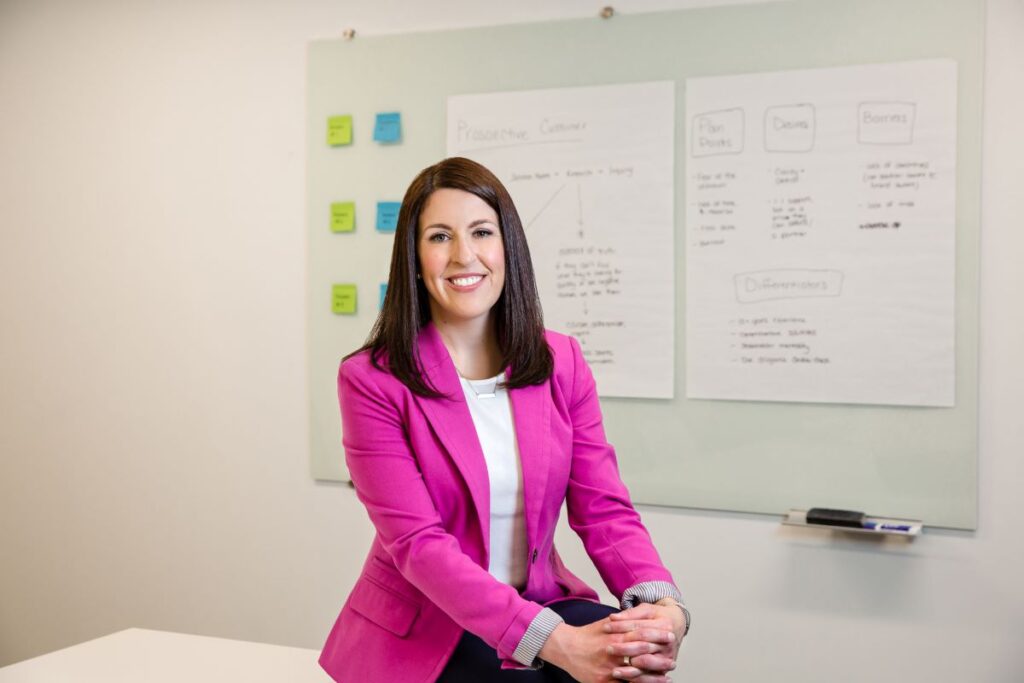5 Steps to Diversify Your Income
A couple years ago in Paris, I had a heartfelt conversation with my friend Sam about starting Ellevated Outcomes. We were on a break from class, taking in some much needed soleil before another marathon learning session kicked off. As a long-time entrepreneur himself, he ended our ten minute chat with this advice, “You must diversify your income.”
Fast forward to the world now: we’re a few more years into online everything. Plus personally, I’ve taken the leap into entrepreneurship myself. And as I continue scanning what’s going on around me, I’ve observed that passive income is all the rage. This is the income diversification silver bullet that business owners are looking for. It’s especially attractive when one offers services, vs. tangible products, where income caps at the number of hours in a day. If you do business online, you’ve undoubtedly been hit with Facebook or Instagram ads magnifying the most impactful marketing tricks out there: FOMO, scarcity, and pulling at your heartstrings, all promising to help you unlock this magical land of passive income.
But before you pay $3,500 for an online course (seriously), promising that you’ll effortlessly earn a six-figure income in no time – that it’s “the last training you’ll ever need,” I feel obligated to tell you: passive income is not actually… passive. Even if you do create a knock-your-socks-off service product, you’ll likely be paying heavily in marketing, ad placement, and a team to deliver said product into the world.
Also, consider that consumers are getting smarter, which I think is great. It raises the game for us all! Because everything is online, this is another way that products and services are starting to simply blend together. Sellers’ competitive edges are gone, and once you step outside the online echo chamber, you realize just how similar all these products and people look.
So now what? What does one do if she wants to diversify her income and have uncapped earning potential?

Personally, I suggest that you put some upfront hard work in, that will pay you sustainable dividends for years to come. Find what is specific to your future, assets, strengths and weaknesses, and where that intersects with market demand (AKA people will pay you for it).
1 – Ask yourself: “What’s my end game?”
You don’t have to get out your markers and create a ten year vision board (I mean, you can…). On a simpler level, ask yourself questions about your ideal future, such as, “What do I want my retirement to look like?” Or “What kind of flexibility do I want while raising my kids?” Or “How much sleep do I need to put back into my daily routine?” The timeline for future can be interpreted in a way that makes sense for you. Pause and ask yourself what you want some element of your future state to look like. Then, think about the skills, experience, or assets you need to get there.
2 – Identify your core competencies.
Compétence is a French word that means “skill” in English. What are your skills? Go a couple levels deeper than you typically would with this question, by asking yourself things like:
- What do other people say you do well?
- What are your skills: technical and non-technical?
- When and why do people compliment you?
- What’s your personal and/or professional brand, through the eyes of customers, colleagues, etc?
3 – Take note of your assets and resources.
When listening to StartUp a couple years ago, I heard Alex Blumberg say, “Constraint breeds creativity.” I love this phrase because personally, I like having fewer choices, as too many paralyze me. And it’s true: we do get more creative when we have to work with less – when we have some constraints, be them time, money, materials, etc.
Your assets and resources may be physical, intellectual, or an extension of your network. Some ideas to get you started are: money, equipment, products, access to certain things or people, real estate, processes, skills, etc. When you think about this creatively, you’ll find more than you thought you had.
4 – Get honest about what you like to do.
Even though you know I love me some numbers, I never advise people to make number-based decisions at any cost. Maybe you’ve found the thing that will make you a millionaire; but if you hate doing it, that sounds like a silly path to go down, if you ask me. I think that you should have objective information about the options, then make a personal decision that makes sense for your business and your life.
5 – Test the market.
These days, as people are becoming more aware of their gifts, uniqueness, and sharing their story with the world, (you can’t hear the sarcasm in my voice at all, can you? :)) this step is often pushed to the side.
Chase Jarvis says that
A hobby becomes a business when there’s a market willing to pay.
Therefore, if you want to monetize something, you need someone else to willingly pay for it. Obvious, yet often overlooked.
What I often see is that people concentrate on their skills, experience, and what they like to do, then try to monetize it without ever asking, “Does this align with my end game?” and/or “Is this the thing that other people want?” This process should be done over a considerable time span in order to really test and learn from other people (hint: this should take more than one day or even one weekend).
To really unlock something that may be your next stream of income, you’ll have to ask yourself a lot of questions, talk to other people (a lot), and challenge your own assumptions. If it’s feeling tiresome and like a process with lots of starts and stops, then you’re on the right track. I promise: taking the time to do this upfront will lead you to new income stream that is specific to you and different from others out there.
Next time, I’ll show you how I applied these steps to my own situation, resulting in a new income stream that is quite passive and will make up 30% of my income in 2018.


